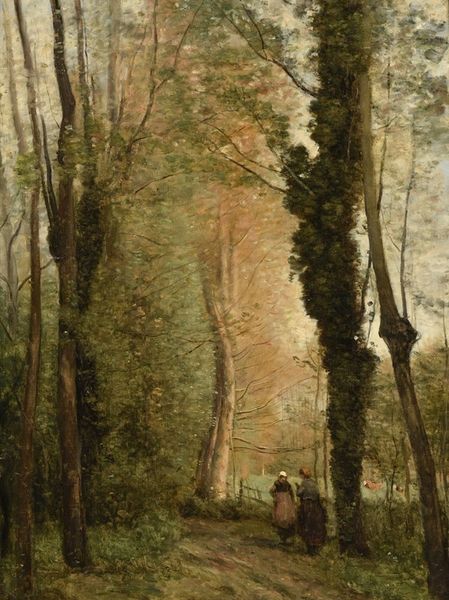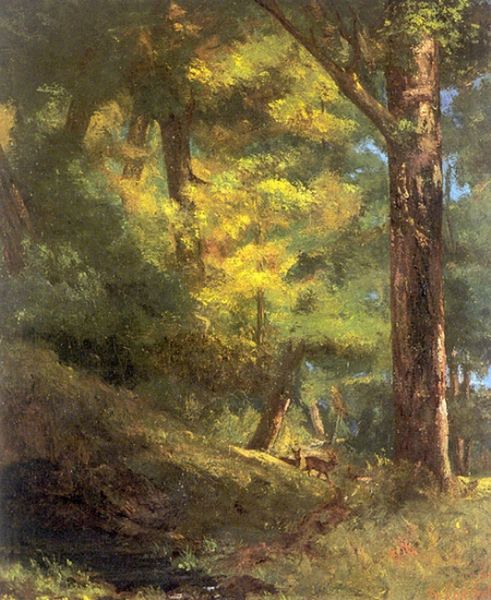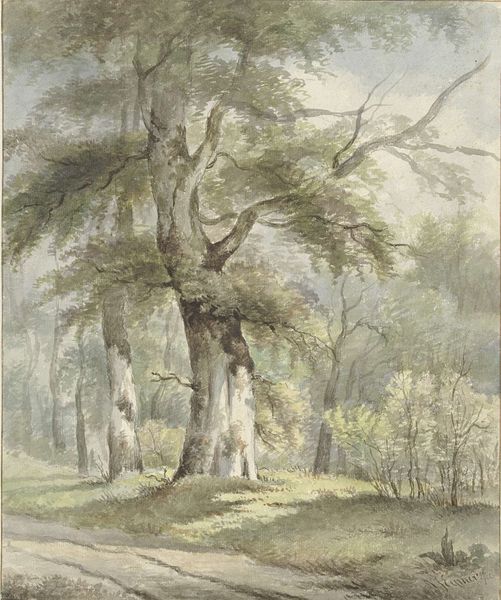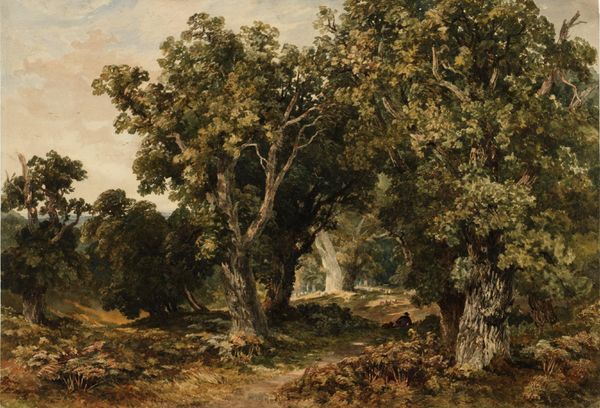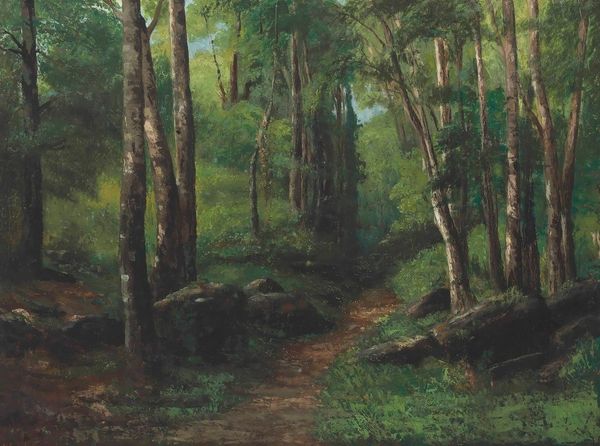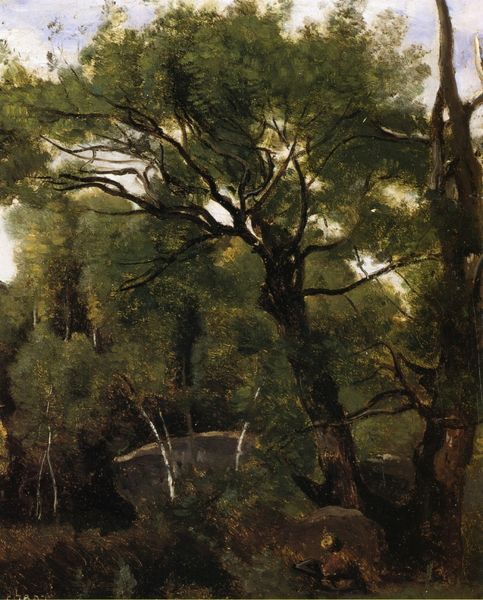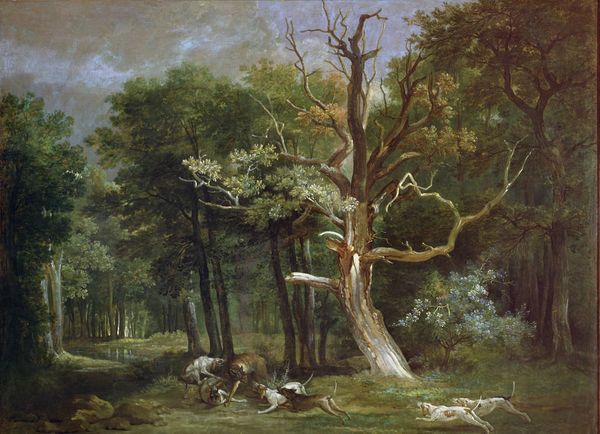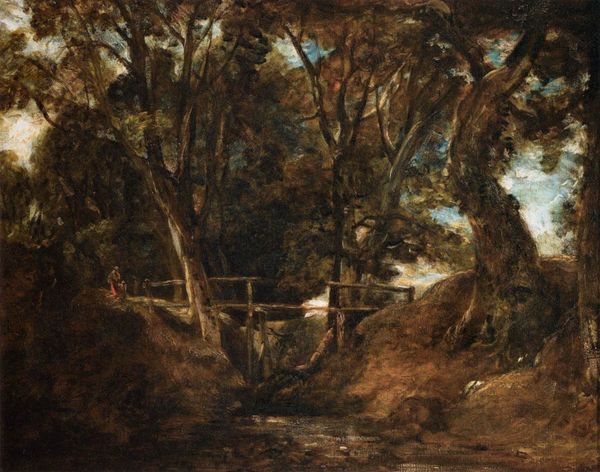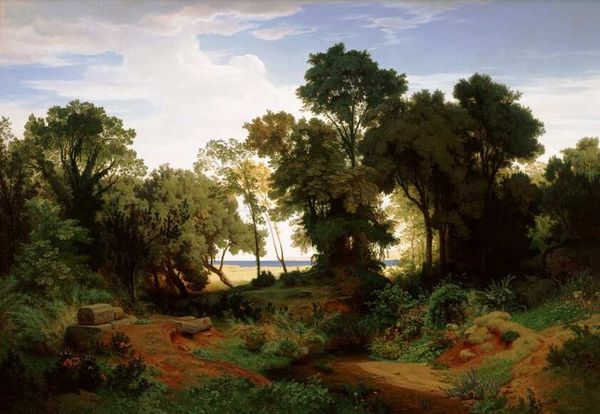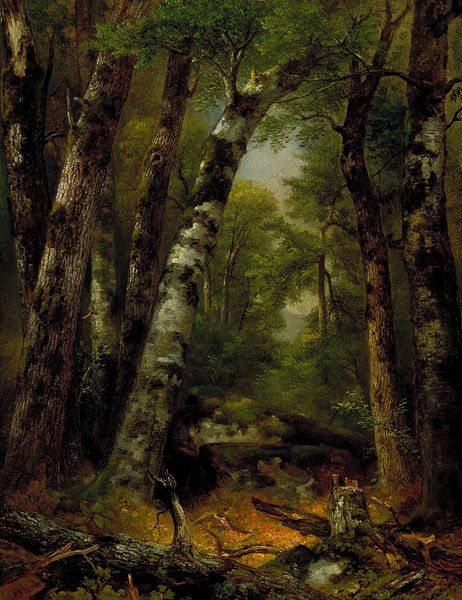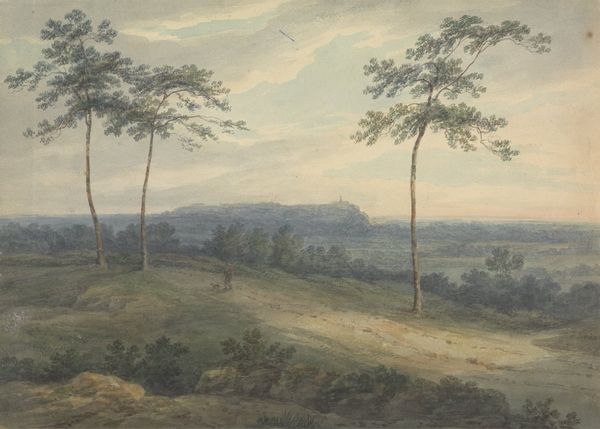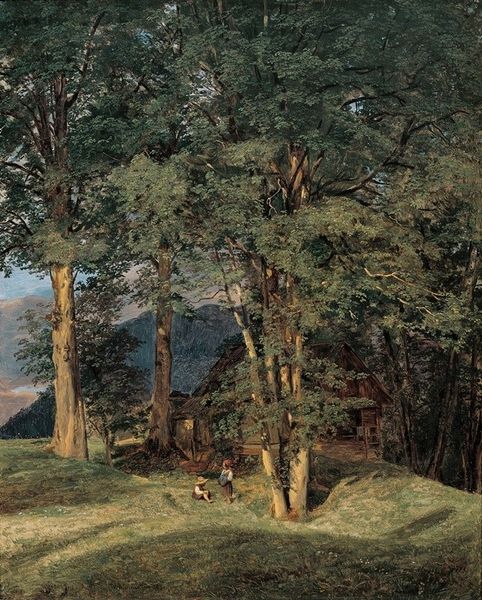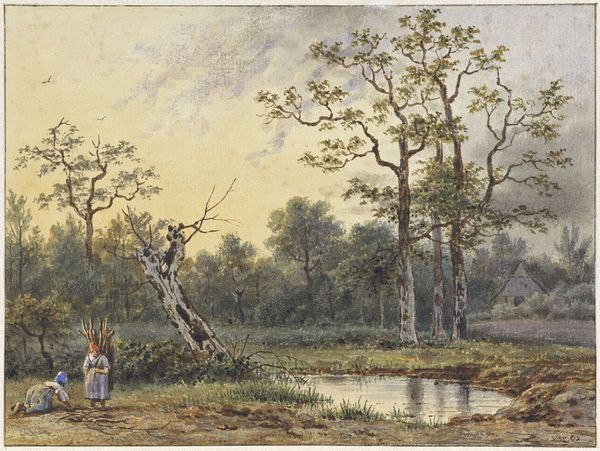
painting, oil-paint, watercolor
#
painting
#
oil-paint
#
landscape
#
charcoal drawing
#
oil painting
#
watercolor
#
watercolour illustration
Copyright: Public Domain: Artvee
Curator: This is “Study of a Woodland Landscape” by Carl Spitzweg. It’s an oil on what appears to be board. Editor: It’s quite charming, isn't it? A sense of depth despite the small scale, a rather traditional composition. It almost feels like a glimpse into another world. Curator: Spitzweg was a key figure in the Biedermeier movement. What’s fascinating here is how he presents a seemingly untouched vision of nature during a time of great social change. The early to mid-19th century saw increasing industrialization across Europe. Artists like Spitzweg offered these almost escapist pastoral scenes. Editor: You can really feel the density of the materials, can’t you? The layering of the paint mimics the complexity of a real forest undergrowth. You almost sense the humidity and the feel of decaying matter. It reminds me of artisanal paper making in how he uses oil paint as if he's working with dyes. Curator: That’s interesting to think about the material's performative function. Beyond his style and composition, it does feel almost radical given the time period—a celebration of traditional techniques in an industrializing world. These landscapes gained in popularity in a growing market of middle-class art collectors. It’s worth considering the public perception of nature, right? A symbol of national identity, of untouched German forests. Editor: Yes, exactly. Look closely; Spitzweg employs very specific techniques to achieve this. See how he almost scumbles the paint to mimic dappled sunlight through leaves? The craftsmanship elevates it from a mere landscape to something that captures a feeling, a very particular connection with the environment. Curator: Right. So the painting embodies both this commercial aspect as well as the prevailing Romantic views of nature as something to be idealized and perhaps carefully managed or controlled even. Editor: A powerful dialogue of idyllic reflection through careful handling of natural pigment, in both composition and technique. It gives us today a reminder of how even landscapes are essentially material engagements with specific value-driven systems. Curator: A tiny window into how painting itself acted as a tool of national image making. Editor: Material culture meeting idyllic landscapes. Intriguing.
Comments
No comments
Be the first to comment and join the conversation on the ultimate creative platform.
